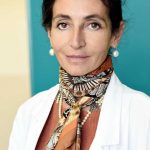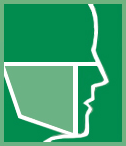THE ROLE OF THE ORTHODONTIST IN THE TREATMENT OF CLP:
WHAT TO DO, BUT ESPECIALLY WHAT NOT TO DO
The role of the orthodontist in the treatment of cleft lip and palate patients may be subdivided into three fundamental aspects: 1) presurgical infant orthopaedics, starting during the very first days of life. 2) orthodontic treatment, which has some important obvious differences with the orthodontic approach in a patient with no craniofacial malformation and needs a profound knowledge of the growth processes and surgical steps in patients affected by cleft lip and palate. 3) the follow-up of growth, which represents a fundamental task of the orthodontist, in order to be able to help the surgeon to improve surgical protocols and timing.
The timing in which treatment is usually started is the mixed dentition, when more than one problem may be solved simultaneously, with the advantage of reducing total treatment time. MAXILLARY TRANSVERSAL HYPOPLASIA: transversal discrepancies of the maxillary arch are very common, but timing and geometry of correction vary tremendously. Coordination with the surgeon to allow simpler execution of the secondary bone grafting procedure, if needed, is fundamental, but also coordination with many other more complex procedures in order not to increase burden of care. MAXILLARY RETRUSION: One of the most traditional treatment methods in class III malocclusions is the early use of a face mask for maxillary protraction. In most CLP patients, though, the original skeletal pattern recurs, within two to three years after the completion of active treatment. Nevertheless, in the mixed dentition there may be an indication for maxillary protraction. These indications may be mechanical, especially if there is an occlusal trauma, functional, such as OSAS or recurrent otitis, or there might be a psychological indication. It is fundamental to be very honest with the families in terms of prognosis in the long term. A later protraction approach with a modified Altramec, allows for the orthopaedic advancement of the maxillary arch after having it effectively mobilized through alternative movements of opening and closure of the maxillary sutures with a double hinge palatal expander. This technique allows to start treatment at a later stage of facial growth, around 12 to 14 years of age and it allows to obtain a clinically significant overcorrection with very few dental compensations and more stable results in the long term. ORTHOGNATHIC SURGERY OR DENTAL COMPENSATIONS? The most common skeletal anomaly in patients with complete cleft lip and palate is an insufficient development of the maxillary arch in the sagittal, transverse and in the vertical dimension. There might also be mandibular deformity such as an excessive development or a marked asymmetry. It is always very important to evaluate the amount of dental compensations which are needed to „avoid“ orthognathic surgery. Excessive dental compensations should always be avoided, as they may cause periodontal problems and often unsatisfactory final aesthetics in cleft lip and palate patients.

Maria Costanza Meazzini is Scientific Director and Orthodontic consultant for Craniofacial anomalies at the CLP Center, Operation Smile Italy, Santi Paolo e Carlo Hospital, in Milano and at the Department of Cranio-Maxillo Facial Surgery, San Gerardo Hospital, Monza, Italy.
She is Adjunct Professor in Craniofacial Anomalies for the residencies in Maxillofacial Surgery and Orthodontics, University of Milano.
She is President of the European Cleft Lip and Palate Craniofacial Association (ECPCA) and Representative and for the European Reference Network (ERNs).
She acquired a Specialty in Orthodontics and Dentofacial Orthopedics and a Master in Medical Sciences in 1995 (1991-1995, Harvard University). Completed a Cranio-Facial and Surgical Orthodontics Fellowship (University of Illinois at Chicago,1995-1996) in 1996 and did trimestral internships at Chung Gung Memorial Hospital (Taipei), Tokyo Medical-Dental University (Tokyo) and Gea-Gonzalez Hospital (Mexico City) for further craniofacial training.
Dr. med. Andrea Freudenberg schloss 1992 das Studium der
Zahnheilkunde an der Universität Witten/Herdecke ab und
promovierte dort 1994. Ihre anschließende Weiterbildung absolvierte sie an der Universität Witten/Herdecke, der Medizinischen Hochschule in Hannover und der Weiterbildungspraxis Dr. Jung in Herne. 1998 schloss sie diese mit der kieferorthopädischen Facharztprüfung ab.
Nach Tätigkeit in verschiedenen KFO-Praxen gründete sie 2005 das Fachzentrum für Kieferorthopädie Dr. Freudenberg & Kollegen in Weinheim. 2015 erweitere sie die Praxis durch einen reinen Frühbehandlungsbereich, in dem im interdisziplinären Team (mit einer Logopädin und Buteyko-Atemtherapeutin) das mykie®-Konzept für myofunktionelle Kieferorthopädie entwickelt wurde. 2019 erfolgte die Gründung der mykie®akademie mit dem Ziel, das Wissen um die myofunktionelle Kieferorthopädie weiter zu geben.
Weitere Informationen sind verfügbar unter mykie.de.
